Blue Underground Re-issue and enhanced 4k restoration of William Lustig’s Maniac and Lucio Fulci’s Zombie
Blue Underground has resurrected two quintessential films in the horror genre. William Lustig’s Maniac and Lucio Fulci’s Zombie are dug up from the grave of endless format re-issuing and enhanced to revolutionary 4k standards. In addition, they further enrich the experience with a mass piling of special features that includes interviews, documentary shorts, cultural events, soundtracks, essays, and more. It is intimidating the work that went into packaging everything together to make these editions a worthy cultural phenomenon. This event brings back my personal experience with the films and alludes me to admit that one film I have never watched before while the other I absolutely adore. However, both are a staple of my youth.
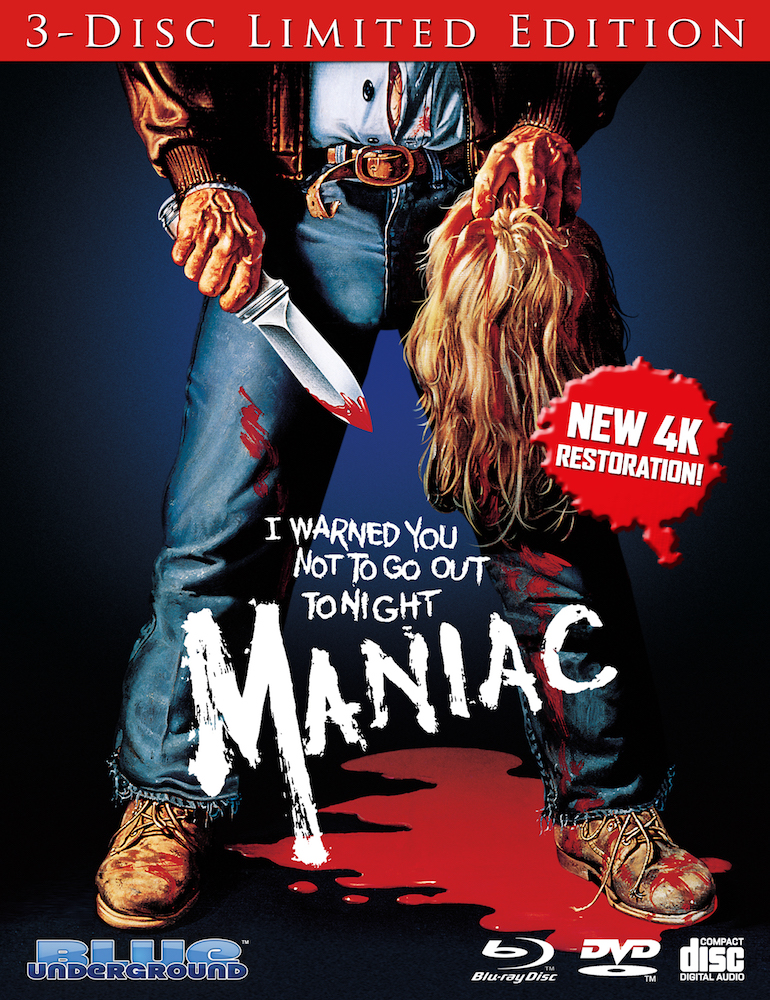
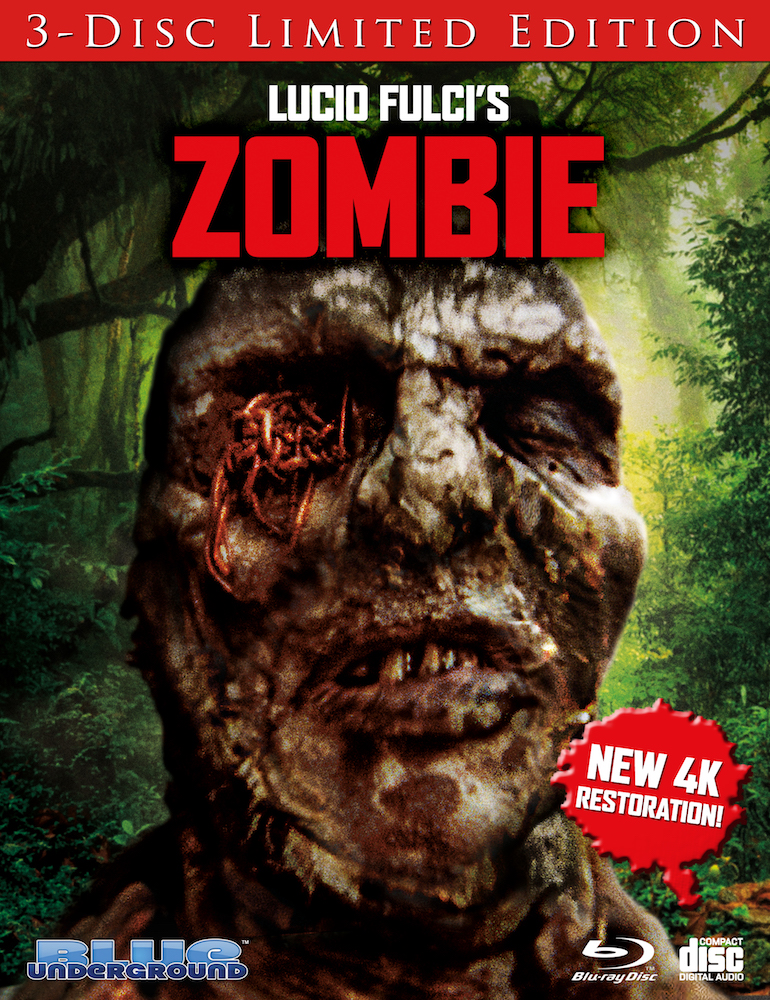
In 1980, I was about eight years old and oblivious to the grime and exploitation films at the time. My horror movie exposure were the Universal monster classics, along with ‘50s and ‘60s B-Movie greats that adorned Saturday television.
One warm Saturday in July, I volunteered to clear brush and limbs from an elderly lady’s property. A friend of my brother’s, she had a densely wooded lot that bordered up against the White River. As we piled in the car, gloves in hand, we headed off to our landscaping adventure. I thought nothing of it until my brother wanted to make a pitstop at the local video store to pick up some VHS films for a movie night later.
It was like walking into a brick and mortar box filled with endless metal shelves. VHS tapes stacked the room from the floor to almost the ceiling. Picture the cliche mom and pop video store from the 1980s. Walking in, the smell hit you like a wall. Heated plastic and ions from the magnetic tapes tucked in those shit brown and dirt black tape cases. Be kind, rewind. What struck me the most was the owner. Behind the counter, he sat with the atypical ‘70s porn ‘stache. It was obvious he was trying to look like a Great Value version of Tom Selleck but failing miserably at trying. F for fake.
This was my first experience inside a movie rental store. I remember opening the door and seeing the owner with his overweight sleaze smile and gruffly New York-style accent. “How ya doin’ kid!” It was that moment it hit me. Various movie posters and cardboard stand ups adorned the store. But this one by the register was larger than life. It had me paralyzed in fear. “I warned you not to go out tonight,” the words scribbled in a blood-red, childhood-like font. The man, shown from the torso down, holds a bloody knife in his right hand and a scalp of blonde hair in his left. It was the most shocking image I had seen in my life.
“Maniac!”
Maniac Movie Trailer
William Lustig’s film is better known for Tom Savini’s splatter effects than the film itself. Yet it is Lustig’s mastermind that pulled all the elements together on an extremely low budget to produce one of horror’s greatest slashers. The man on the poster is Frank Zito, played by Joe Spinell. That publicity artwork made my imagination scare the hell out of me. I thought the scalped hair was a decapitated head, and this guy could be any creeper out in the world ready to jump out at any moment. . . walking the sidewalks. . . in that car over there. . . behind that tree!
Zito’s derangement stems from being abused by his prostitute mother. Now a serial killer, he roams the streets killing women and scalping them. The hair and various clothing items are trophies he later nails to mannequins. This is the premise of the film.
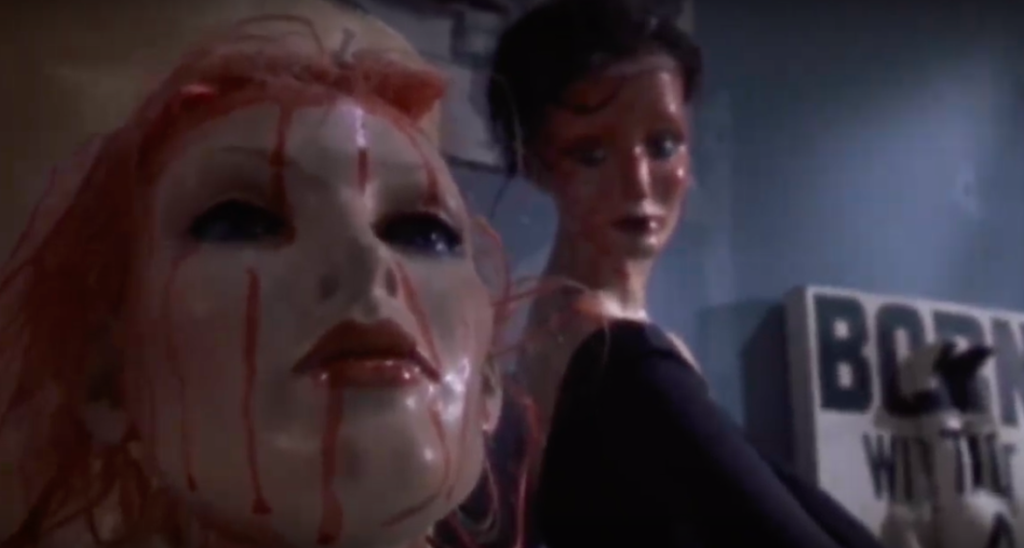
As we started work back in the woods, I could not stop thinking about the image on the stand-up. Occasionally, I would have to take a wheelbarrow full of limbs alone out into the woods to be unloaded in a pile. I could see Zito jumping out from around any tree, bloody head and knife in both hands. Every time I made it out to the wooded abyss overlooking the river’s edge, I would hightail it back into civilization as fast as I could. Everyone chalked it up to me being a hard worker. I chalked it up to being scared shitless. That day traumatized me and until now, I have never watched the 1980 version of Maniac.
I bought a book a few years later on movie special effects. There was a section on Tom Savini. Savini’s work on zombies fascinated me, yet one of the photos is a scene in Maniac where Zito is hallucinating in bed and the mannequins come to life and attack him, eventually pulling his head off of his body like a cork on a bottle. Never seeing Zito’s face on that poster, I was clueless that the black and white photo used in the book was a part of Maniac.
As I grew older, I became huge fans of Savini’s work in Dawn of the Dead and Friday the 13th. Yet, I always refused to take the dive and sit through a viewing of Maniac. Savini’s considered work on the film one of his finer moments. He got to spend time in New York City, hang out with adult film stars, and craft a personal role into the film, playing Disco Boy. He portrayed a New York disco clubber who is seen after hours taking a girl to the river to make out in his car. Unintentionally, these two were Zito’s next victims thanks to his double-barreled shotgun. Savini’s head exploded like a melon. This scene deserved multiple camera angles with different perspectives of the prosthetic decimation until we see the girl with blood all over her like icing on the cake.
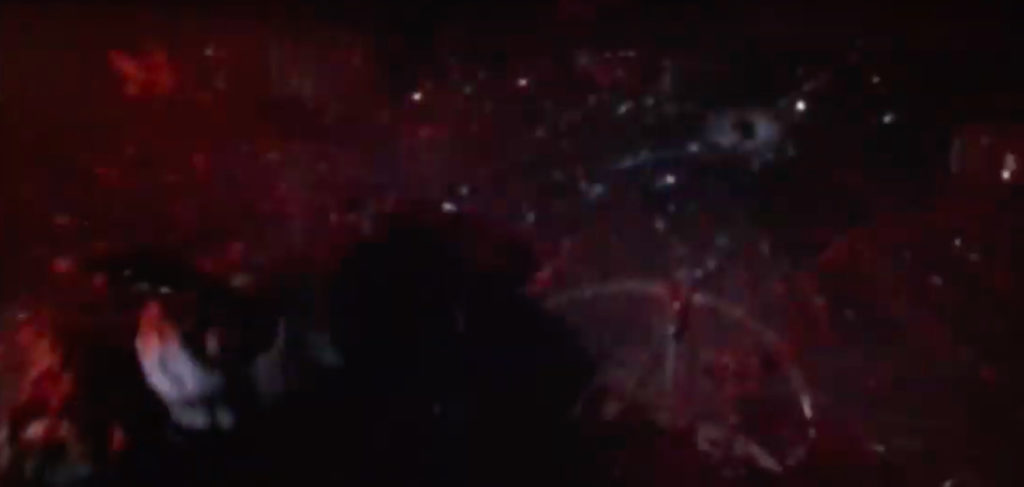
Almost 40 years later, Blue Underground’s release is what entices me to plunge into this seedy New York exploitation flick. Comparing it with the original release (yes, I dug that up, as well), the 4k transfer puts a new gloss on the film without completely hampering with its emotions.
Like a grimy car windshield lost in the city, the original is tea stained. Skin is yellowish. Scenes are shot guerilla warfare style sometimes leading to visual mistakes. Zito’s murder of a prostitute, for example, shows bad editing cuts. Zito stalks a nurse (Kelly Piper) who ends up alone late at night inside the New York Subway. As she is pounds on a subway door desperate for escape, the train takes off. The shot pans out. You see people on the other side of the subway until they retract into close up shots to give the appearance she is alone and no one can help her from Zito’s terror. Lustig shot the scene with the nurse on the exit side of the subway train.
As with The Texas Chainsaw Massacre, bad film quality can be an enhancement that hyper-authenticates its substance. The 4k transfer meets higher quality standards, however, the film grit is still preserved. Spinnell pulls off the iconic greaseball with Ed Gein-like post traumatic stress syndrome over the gripping control and abuse of a mother long dead.
Where Maniac sat for all of these years like a thorn in my side, Zombie, or Zombi 2, or Zombie Flesh Eaters, or The Dead Are Among Us, or whatever you choose to call it, serves as a glorious reunion.
Zombie Movie Trailer
My love for horror and special effects blossomed in the mid ’80s high school days when I found a core group of friends who also enjoyed the things I found fascinating: punk, metal, campy horror.
I cannot recall who found a bootleg copy of the Italian version of Zombi 2 (thanks to the video nasty movement and its original X rating, it was not easy to find until years later and even then it was bought second hand at a vhs trading convention). But learning that it was the unofficial sequel to Dawn of the Dead, our thirst to see this film was high. Plus we had heard good things about Fulci’s work.
For us, it instantly became a cult classic. I can count a handful of times something became so influential in our psyche. This was one of those influential moments. For perspective, some others included The Butthole Surfers’ Psychic, Powerless…Another Man’s Sac, and Blue Velvet.
Despite bad tracking problems and the film quality, our initial screening of Fulci’s Zombie was still an eye opener. The gore. . . the soundtrack. . . the eye. Holy shit, this film!
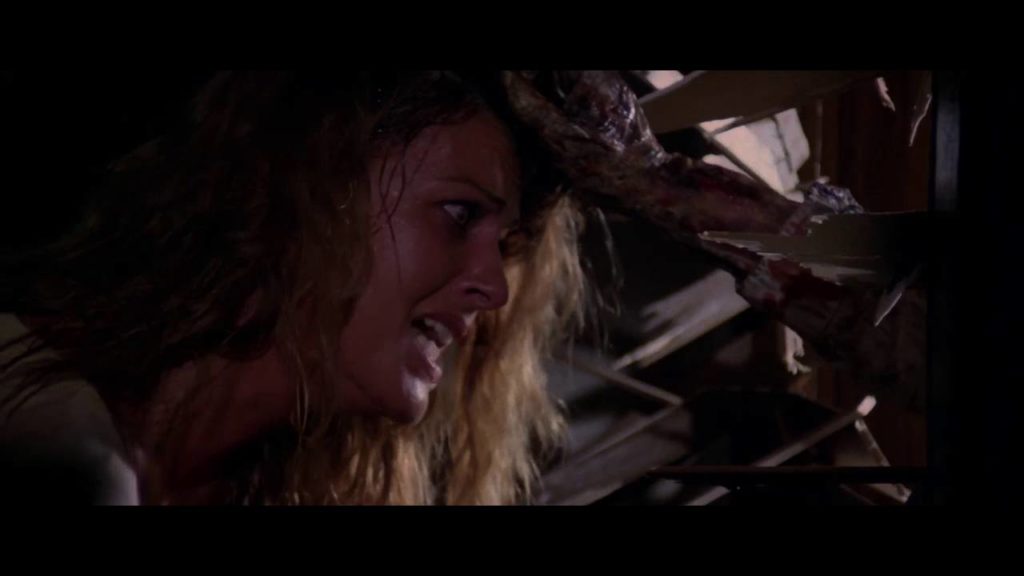
Our day of celebration came when Movieland U.S.A., our local video rental store, stocked a big box VHS copy of Zombie. It was like Christmas day with an Americanized R-rating stamped to it. Because of the film’s access, we immediately held a Zombie party. All the freaks and weirdos got together to relish in Fulci’s masterpiece.
As the tape began to spin and the boat floated up against the New York City harbor, that first zombie sluggishly creeping up on the policemen investigating was an icon of genre filmmaking. Fabio Frizzi’s minimalist synth horror track instantly conjured up apprehensive thrills. This was our quintessential horror film.
Fabio Frizzi – Zombie Theme
To us, the heroes of the film were the zombies. The actors were only secondary, and we gauged the hour and a half by its scenes. Although Fulci defines the Italian horror genre, Zombie is about New York City as much as it is an island zombie story disguised as a giallo film. The dialogue between married couple Dr. Menard (the late Richard Johnson) and Mrs. Menard (Olga Karlatos) resides in deep suspense as Mrs. Menard realizes there is no way off the island that has given birth to the dead walking again. Mr. Menard suffers within the concepts madness as he studies the phenomena. And in Fulci’s world, the zombies are not just island folklore, they are a virus that could spread to a city like New York.
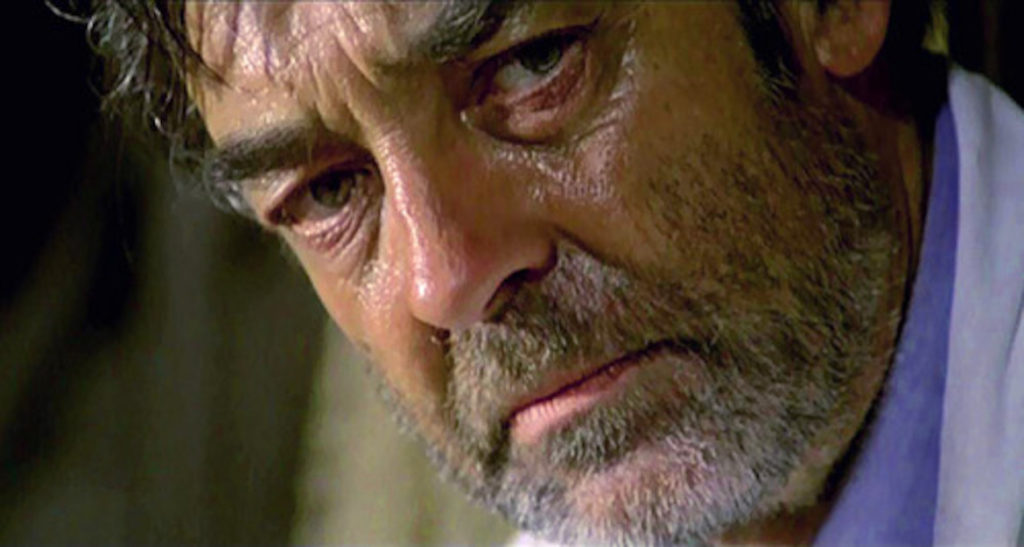
Watching at an older age, I appreciate the film’s plot and character development as well as their flaws. I celebrate the film’s philosophy as much its effects. We used to jump up and cheer when the iconic scene of the splintered wood of a shattered door pierced into Mrs. Menard’s eyeball.
Zombies=1 Humans=DEAD
The apex of the film goes into effect when zombies attack the island and take out the characters one by one. It’s like being ringside at a sporting event or tallying up Friday the 13th Jason kills like it’s a fantasy football league.
Richard Johnson’s work in this film is like poetry. His maddening sanity is a consequence from witnessing the dead walk again. Slightly delusional yet resulting in being one of the more logical people in the film, he roams through this plot like a cross between a scotch-drinking Orsen Welles and an action hero.
Taken from the concept of Night of the Living Dead, there is no hope for the characters in this film. But Fulci goes beyond Romero’s vision by ending the film in an unrelenting zombie epidemic. The film ends as hordes of zombies cross the Brooklyn Bridge into Manhattan. The true horror of Zombie is the imagination just as the publicity stunt of Maniac led to a controversy far beyond a young kid’s imaginative shock over a cardboard standup in a VHS store.

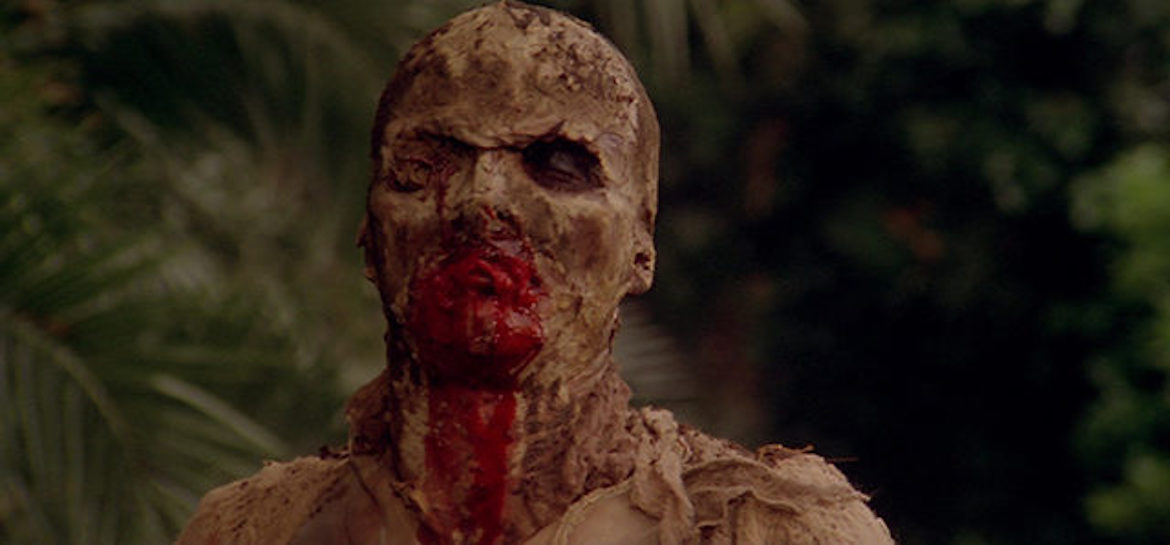


No Comment! Be the first one.